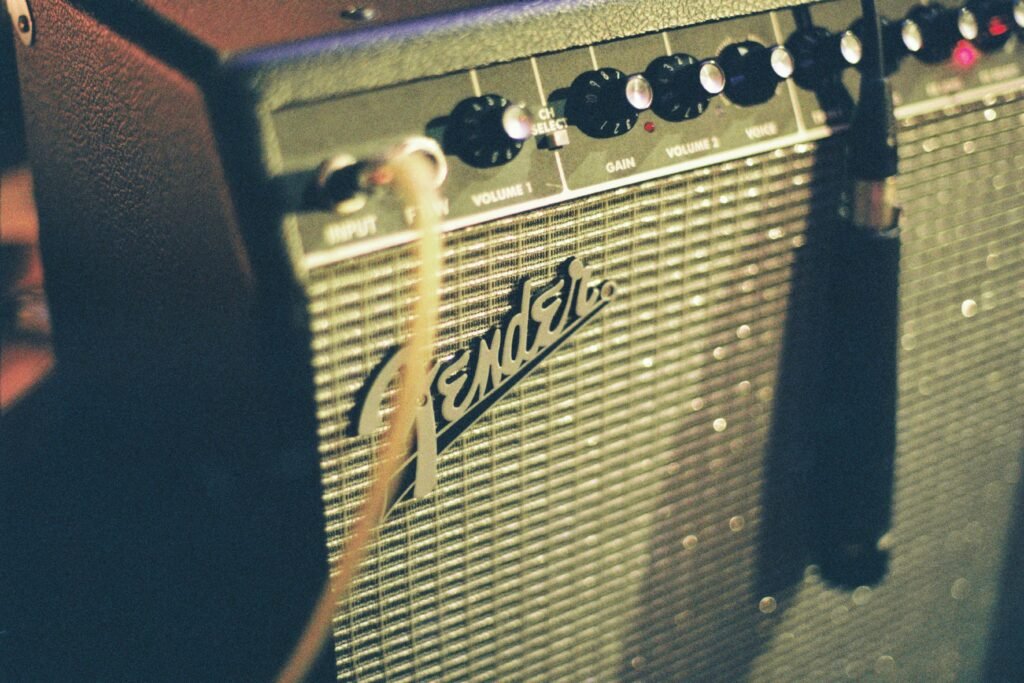Released in 2013, AM marked a turning point for Arctic Monkeys, a band that had already carved out an identity as witty, indie rock upstarts with rapid-fire lyrics and garage-tinged energy. Yet with AM, the band brought a mature, seductive edge to their sound, amplifying their swagger with a mix of desert rock, hip-hop-inspired beats, and bold, darkly resonant lyricism. This album arrived at a pivotal moment, not only in the band’s career but also within a shifting music landscape where genres increasingly overlapped. Rock bands were grappling with how to stay relevant in a world saturated with pop-driven hooks and digital production techniques, and AM felt like a roadmap forward.
Artistic Intentions
This fifth studio album sees Arctic Monkeys pivot toward a brooding, nocturnal sound that pushed their style into unfamiliar territory. Known for his evocative storytelling, frontman Alex Turner cast aside the youthful, observational tales of Sheffield nightlife from their early albums and instead created a world that felt atmospheric, personal, and shadowy. Inspired by the sultry spirit of R&B, the slinky riffs of 70s rock, and hip-hop’s rhythmic precision, AM was not simply a stylistic departure but a deepening of the band’s narrative scope. Here, Arctic Monkeys weren’t looking out from dingy pubs—they were pulling listeners into a hazy, after-hours universe.
Sonic Exploration

AM stands out for its meticulous production, which crafts a sleek yet shadowed soundscape that feels like a world unto itself. Produced by longtime collaborator James Ford with co-production from Ross Orton, the album achieves a sophisticated balance between crispness and warmth, embodying a polished, nocturnal atmosphere that’s modern yet timeless. Each track resonates with a refined clarity, allowing every element—be it a vibrating bass line, a sultry guitar riff, or Turner’s hushed vocals—to shine. The production quality serves the album’s themes seamlessly, creating a sonic environment that feels darkly alluring, inviting listeners into the hazy, seductive world Arctic Monkeys have built.
Musical Arrangements
The arrangements across AM are both minimalist and immersive, an intriguing combination that highlights the band’s musical evolution. The guitar riffs, especially on tracks like “Do I Wanna Know?” and “R U Mine?”, lean heavily on distortion and reverb, creating a hypnotic, bluesy texture that’s as engaging as it is stripped-back. Drummer Matt Helders’ beats are meticulously constructed, laying down a backbone that’s both rock-solid and groove-laden, giving each track a rhythmic pulse that’s influenced by hip-hop production.
Bassist Nick O’Malley takes a more prominent role than in previous albums, with deep, rolling basslines that throb through songs like “One for the Road,” adding a sense of movement that’s almost cinematic. The minimalist yet evocative arrangement also allows Turner’s vocals to become the focal point, as he alternates between gritty laments and falsetto-infused croons, layering vocal harmonies in ways that give the album a haunting, almost ghostly quality.
Genre Elements
Genre-wise, AM traverses a unique intersection of rock, R&B, and hip-hop. Arctic Monkeys dip into the bluesy grit of stoner rock, particularly with their heavily fuzzed-out guitar tones, while also embracing the melodic contours of classic R&B and soul. Tracks like “Arabella” evoke the swagger of 70s rock icons, even as their structure is rooted in hip-hop’s looped, head-nodding rhythm. The influence of artists like Dr. Dre is evident in the emphasis on rhythm, especially in the way each song unfolds with a deliberate, hypnotic pace, allowing the melodies and grooves to sink in rather than rush by.
AM also weaves a sense of nocturnal mystique that recalls both desert rock and neo-soul, resulting in a sound that’s atmospheric yet raw, seductive yet somber. The genre-blending here feels fresh and fully realized, breathing new life into the rock genre while acknowledging the influences Arctic Monkeys have absorbed from other musical realms. Rather than being a mere genre exercise, however, AM feels like a cohesive body of work that fuses these styles naturally, offering a listening experience that’s as moody and intimate as the stories it tells.
Lyrical Analysis

At the heart of AM lies a raw exploration of desire, loneliness, and the hazy allure of late-night introspection. Alex Turner’s lyrics delve into the vulnerability and bravado that come with unrequited love, obsessive longing, and the pull of intoxicated midnight calls. Themes of romantic yearning are central, often expressed through the haze of a nocturnal world where attraction is complicated by self-doubt and ambiguity.
Songs like “Do I Wanna Know?” and “Why’d You Only Call Me When You’re High?” capture the tension between desire and hesitancy, portraying the messy, unglamorous side of romance through clever wordplay and a distinctively shadowy lens. Turner crafts a world where love and lust are often entangled, creating a lyrical tension that feels palpable and relatable.
Lyrical Depth
The lyrics on AM are some of the most nuanced of Turner’s career, moving from the straightforward storytelling of Arctic Monkeys’ earlier albums to a more poetic, abstract style. While many songs revolve around the straightforward longing for connection, Turner weaves in complex metaphors and double entendres that elevate the album’s themes. For instance, in “Arabella,” he likens a romantic interest to “a 70s head-trip” with “interstellar gator skin boots,” blending references that evoke both a nostalgic rock star allure and an otherworldly mystery. Such imagery gives the album a surreal quality, as if each song were a snapshot from a fever dream, capturing fleeting thoughts and impulses rather than linear narratives.
Recalling the lonely, sometimes desperate side of infatuation, Turner’s lyrics often walk a fine line between confidence and self-reflection, pulling listeners into a shared vulnerability. This vulnerability is most evident in “I Wanna Be Yours,” where Turner borrows from poet John Cooper Clarke to craft an open-hearted confession that’s both earnest and slightly melancholic, expressing a desire for intimacy in simple, tangible metaphors (“I wanna be your vacuum cleaner, breathing in your dust”). This closing track’s mixture of humor and sincerity gives the album a soft landing, capturing the human yearning for connection in a refreshingly direct yet poetic way.
Emotional Impact
The emotional impact of AM‘s lyrics is profound, inviting listeners to confront their own late-night yearnings and insecurities. Turner’s voice drips with a sense of introspective coolness, which allows the lyrics to hit with surprising emotional weight despite the album’s otherwise slick, laid-back aesthetic. Whether it’s the frustration of an unanswered question in “Do I Wanna Know?” or the desperation of a midnight call in “Why’d You Only Call Me When You’re High?”, AM captures the ache of love and longing in ways that resonate deeply.
These lyrics linger, prompting reflection and empathy from anyone who’s ever felt the tug of desire mixed with the chill of isolation. Through its poetic complexity, AM tells a story not only of love but of the darker, more vulnerable corners of the human heart, bringing a sense of depth that elevates the album’s emotional resonance.
Cohesion and Flow

The flow of AM is as deliberate and immersive as its dark, magnetic aesthetic, drawing listeners into a continuous journey through midnight moods and introspective grooves. The album unfolds with a sense of narrative progression, as if each track were another chapter in a late-night odyssey where emotions intensify and self-reflection deepens. Opening with the sultry, pulse-driven “Do I Wanna Know?”, Arctic Monkeys set the stage for a record that moves with a smoldering confidence, each song feeling like a natural extension of the last. The progression feels organic, as tracks like “R U Mine?” and “Arabella” build on the initial tension, exploring variations of desire and bravado that make the album’s first half feel both kinetic and tightly woven.
Midway through, songs like “No. 1 Party Anthem” and “Mad Sounds” offer a slight shift in pace, bringing a softer, almost melancholic respite that slows the album down just enough to explore more introspective themes. These tracks provide a reflective pause, balancing the album’s earlier swagger with a gentler, more vulnerable atmosphere. By strategically sequencing these quieter songs, Arctic Monkeys create a rhythmic ebb and flow that pulls listeners in deeper, mirroring the way a night out often softens into quiet contemplation as dawn approaches.
Thematic Consistency
From start to finish, AM maintains a cohesive sonic and thematic identity. The lyrics, production, and arrangements all work in tandem to craft a world that feels united by mood and message, rooted in themes of yearning, loneliness, and the paradoxes of attraction. There are no jarring stylistic shifts; instead, each track leans into the album’s broader aesthetic, consistently reinforcing its late-night atmosphere with every beat, bassline, and echoing vocal harmony. Even as the album dips into different tempos and tonalities, Arctic Monkeys manage to keep the mood intact, with each song capturing a distinct facet of the overarching themes without straying from the album’s immersive universe.
Standout Tracks and Moments
Several tracks on AM capture the essence of Arctic Monkeys’ bold artistic evolution, standing out not only for their creativity but for the lasting emotional impression they leave.
Do I Wanna Know?
“Do I Wanna Know?” opens the album with one of its most iconic moments—a slow-building, slithering guitar riff that’s both infectious and unsettling, setting the tone for the entire album’s exploration of desire and doubt. This track showcases Arctic Monkeys’ ability to merge rock grit with R&B sensuality, and Alex Turner’s lyrics bring the introspective energy that underpins AM, as he questions whether his feelings are returned or if he’s caught in an obsessive loop. Its hypnotic beat and chorus make it an instant classic, embodying the dark allure and tension that defines the album.
R U Mine?
“R U Mine?” captures a different side of AM’s mood, dialing up the energy with relentless drums and Turner’s powerful vocal delivery. This track feels like an anthem for the uncertainties and frustrations of infatuation, where the thrill of connection is mixed with a primal urge for control. Matt Helders’ drumming is a standout here, locking into a rhythm that adds urgency and intensity. Turner’s gritty vocal performance, paired with some of the album’s most dynamic guitar work, makes “R U Mine?” a raw and electrifying highlight.
No.1 Party Anthem
“No. 1 Party Anthem” shifts the mood, offering a melancholic twist in the middle of the album. Stripped down and slower-paced, this track leans into a softer rock ballad style, echoing the introspective anthems of artists like David Bowie. The lyrics paint a vivid picture of a party scene where Turner plays the self-aware observer, aching for connection yet paralyzed by self-consciousness. The track’s nostalgic feel and self-reflective lyrics create a standout moment, offering a quiet vulnerability that contrasts beautifully with the album’s bolder tracks.
I Wanna Be Yours
“I Wanna Be Yours” is another defining moment that closes the album on an intimate note, featuring lyrics borrowed from poet John Cooper Clarke. This track distills the album’s themes into a simple, poignant love song that’s both tender and haunting. Turner’s lyrics are refreshingly straightforward, using quirky, domestic imagery to express the desire for total devotion. The song’s stripped-back, dreamlike production and Turner’s warm, restrained delivery make “I Wanna Be Yours” a memorable closer, capturing the lingering vulnerability of love and connection that underlies AM.
Memorable Moments
Memorable moments are woven throughout the album, including the whispered opening line of “Do I Wanna Know?” and the eerie falsetto harmonies on “Arabella,” which give the track a mystical, almost psychedelic vibe. The echoing, spacious production of “Why’d You Only Call Me When You’re High?” also stands out, as it underscores the feeling of isolation and desperation in Turner’s voice, making the track feel as though it’s being sung down an empty corridor. Even the silence and space between notes are used to full effect on AM, creating an atmosphere of restraint that amplifies the emotional intensity of each track.
Artistic Contribution and Innovation

AM occupies a unique space within the rock genre and the broader music landscape of the 2010s, standing as a bold statement on how rock can evolve by pulling in unexpected influences without losing its edge. At a time when rock was perceived as losing ground to the rising popularity of pop, hip-hop, and electronic music, AM challenged genre boundaries and brought new life to rock by infusing it with modern sounds and sensibilities. Arctic Monkeys managed to appeal to a new generation of listeners while retaining their core identity, making AM feel like both a progression for the band and a revitalizing force for contemporary rock.
Genre Elements
One of AM’s most innovative elements is its seamless blending of rock with hip-hop and R&B influences. Turner’s description of the album as inspired by “a Dr. Dre beat with a rock ‘n’ roll feel” speaks volumes to how Arctic Monkeys reshaped their sound. The beats on tracks like “Do I Wanna Know?” and “Why’d You Only Call Me When You’re High?” are built on grooves and rhythms that echo hip-hop’s looped structures, which was rare in rock at the time.
This rhythmic emphasis and minimalist approach gave AM an intoxicating, hypnotic quality that stood apart from traditional rock’s more complex, guitar-heavy arrangements. By emphasizing bass and drums, the band crafted a more spacious, groove-centric sound that mirrored the tension and release patterns of hip-hop while retaining rock’s grit and edge.
In addition to genre-blending, AM stands out for its production approach, which is both polished and deliberately restrained, allowing every beat and riff to resonate within a dark, atmospheric soundscape. The spacious, reverb-heavy production gives the album an almost cinematic quality, emphasizing mood and ambiance over bombast. Arctic Monkeys’ decision to focus on the power of restraint—choosing haunting pauses, drawn-out silences, and steady pacing—was an unconventional choice that helped set AM apart from the maximalist, high-energy sounds dominating mainstream music at the time. This decision to create an album that felt nocturnal and introspective, without succumbing to glossy production norms, was both artistically daring and refreshingly original.
Themes
Thematically, AM also pushed boundaries by diving into vulnerable, introspective territory in ways that still felt gritty and cool. Where their earlier work had leaned heavily into observational storytelling with a youthful edge, AM embraces a more introspective, emotionally charged lyrical style. Turner’s lyrics reflect the complex emotions of adulthood—yearning, loneliness, doubt, and desire—capturing these feelings in a poetic, often ambiguous way that resonates deeply with listeners. His use of noir-like imagery and metaphors brings a literary quality to the album, enhancing its dark allure and helping Arctic Monkeys forge a distinctive, more mature identity.
Closing Thoughts

AM is a standout album that showcases Arctic Monkeys at their most daring, capturing a sophisticated, mood-driven sound that expanded their artistic identity and gave new shape to modern rock. The album’s strengths lie in its seamless blend of genres, pulling from rock, R&B, and hip-hop influences to create a nocturnal, groove-laden soundscape that feels both raw and refined. Each track builds on the album’s sultry, introspective themes, resulting in a cohesive experience that’s as alluring as it is haunting. With memorable tracks like “Do I Wanna Know?” and “R U Mine?” and quiet, resonant moments in “No. 1 Party Anthem” and “I Wanna Be Yours,” AM strikes a near-perfect balance between swagger and vulnerability.
A defining feature of AM is its polished, spacious production, which allows each song to breathe and unfold at its own pace. This restrained, minimalist approach sets the album apart from Arctic Monkeys’ earlier work, moving away from the explosive energy of their early records to something more mature and nuanced. Alex Turner’s lyrics are another highlight, reflecting an evolution toward introspection and poetic subtlety. His storytelling on AM is complex and multi-layered, inviting listeners into a midnight world of longing and self-reflection.
The album’s few weaknesses lie in its uniformity; while the thematic consistency is one of its strengths, some tracks lean so heavily on the same tonal and rhythmic formula that they occasionally blur together. This could leave some listeners wishing for more diversity in tempo or style. However, the hypnotic quality of AM ultimately draws listeners back, as each track feels like a distinct yet interwoven piece of a larger story.
Official Rating
Overall, AM represents a pivotal moment in Arctic Monkeys’ career, marking both an artistic maturation and an influential contribution to the modern rock landscape. The album’s innovative blend of styles and introspective themes have left an indelible mark, inspiring a generation of artists to push the boundaries of rock music. For these reasons, AM earns a well-deserved 9 out of 10—a near-flawless album that’s bold, cohesive, and profoundly resonant. This record cements Arctic Monkeys as a band unafraid to evolve, offering listeners a sophisticated, immersive experience that lingers long after the final track fades.
